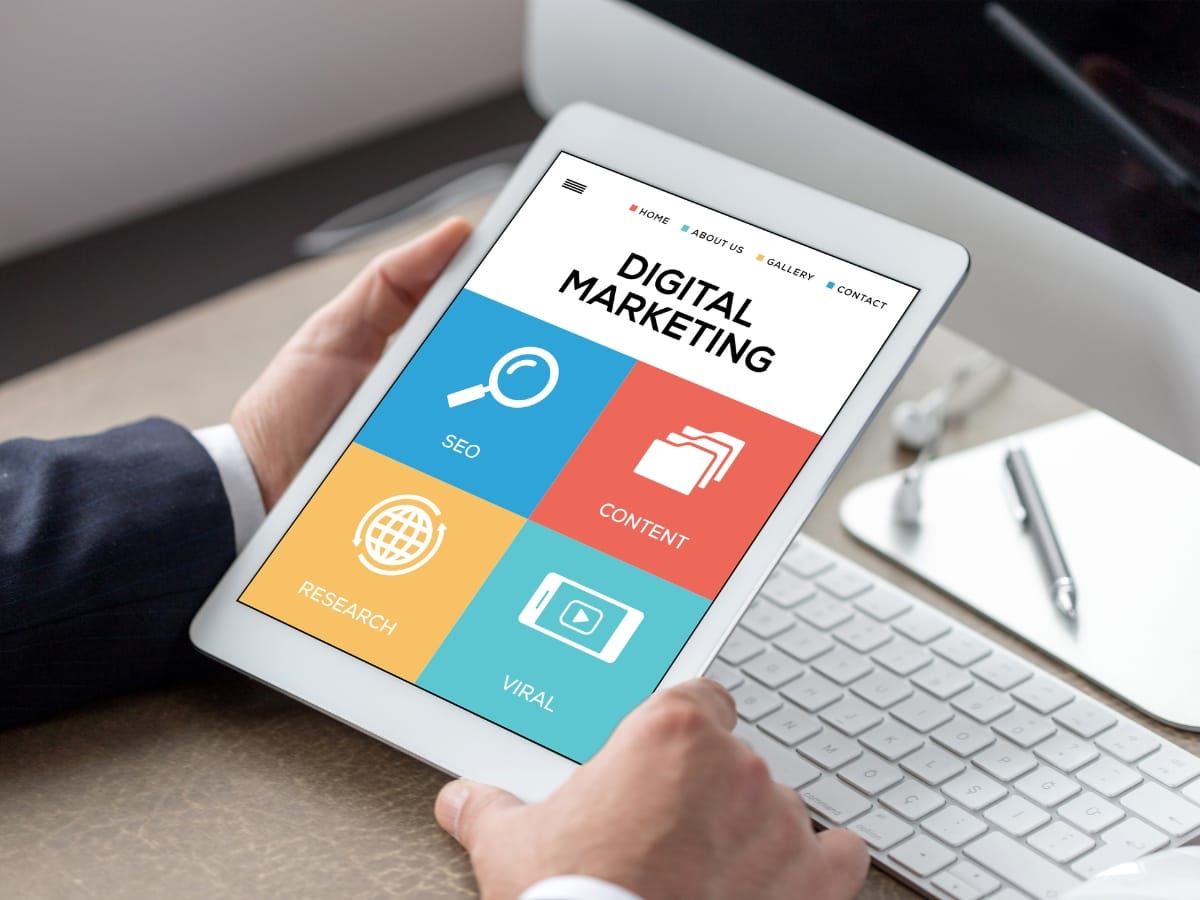Dynamic remarketing has revolutionized digital advertising by allowing brands to re-engage potential customers with highly personalized ads that showcase the exact products or services they previously viewed—turning abandoned carts and browsing history into powerful conversion opportunities. Unlike standard remarketing, which serves generic ads, dynamic campaigns automatically populate ads with relevant visuals, pricing, and promotions tailored to each user’s behavior, dramatically increasing relevance and click-through rates. In this guide, we’ll explore how to set up effective dynamic remarketing campaigns, from building segmented audiences and crafting compelling creatives to optimizing bids and avoiding common pitfalls—so you can reconnect with interested users and drive them confidently toward a purchase.
Dynamic Remarketing: How to Win Back Customers Fast
What Exactly Is Dynamic Remarketing and How Does It Re-Engage Potential Customers?

Dynamic remarketing serves tailored ads to people based on the exact products or services they viewed on your site or app. A small tracking tag records key actions, your catalog feeds item details to the ad platform, and the system builds audiences from those actions. The result is an ad that mirrors each person’s browsing history. Someone who looked at a stainless sink yesterday sees that same model today across Google’s Display Network or in a social feed, with current price, image, and a direct link back to the product page.
What Does Dynamic Remarketing Mean for Small and Local Businesses?
It brings big-brand personalization to smaller budgets. If a visitor compared web design packages or checked pricing on local SEO, they later see creative that references those services rather than a generic pitch. Pairing these ads with ongoing search optimization and content helps close the loop: search brings new traffic, content builds trust, and remarketing brings qualified visitors back when they are closer to buying. For service firms, it can highlight popular bundles, seasonal promos, or recently viewed case studies to nudge the next step.
How Does Dynamic Remarketing Work: Tracking Pixels, Data Feeds, and Audience Lists Explained
Three pieces make the system run. First, the tracking pixel records page views, product IDs, cart events, and conversions. Installing it through a tag manager keeps the setup tidy and consistent. Second, a structured data feed lists every item you sell or promote, including titles, images, prices, availability, and landing URLs. That feed syncs with your ad platform so the right creative can build on the fly. Third, audience rules group people by behavior, such as product viewers, cart abandoners, or past purchasers. When the platform matches a person from a given audience to the catalog, it renders an ad with the relevant item and a call to return.
What Are the Differences Between Remarketing and Retargeting?
People often use the terms interchangeably, but there is a practical split. Remarketing usually relies on your owned data. You email past buyers, upload a customer list to a platform, or trigger messages from your CRM to re-engage known contacts. Retargeting uses cookie or pixel data to reach anonymous visitors after they leave your site, showing display or social ads without needing an email address. Most businesses benefit from both. Owned data programs keep you connected to customers who already trust you, while pixel-based ads recover interested shoppers who have not converted or shared contact info yet.
How Do You Measure and Improve Performance Without Wasting Spend?
Set clear goals for each audience and track them separately. Cart abandoners deserve tighter frequency caps, shorter lookback windows, and stronger offers. Product viewers need more education, such as benefit-focused copy or a comparison chart. Watch view-through and click-through conversions, cost per acquisition, and return on ad spend; if CPA climbs, narrow the audience window, trim placements that underperform, or refresh creative that has run too long. Keep your feed clean with accurate pricing and up-to-date images, since stale details hurt conversion and can trigger policy issues.
What About Privacy and Compliance?
Obtain consent where required, honor opt-outs, and disclose tracking in your policy. Use platform tools for consent mode and limit data to what is needed for ad delivery and measurement. Done right, Dynamic Remarketing respects user choice, stays compliant, and keeps your brand in front of the right people at the right time.
What Are the Key Benefits of Dynamic Remarketing for Small Businesses?

Dynamic remarketing helps small businesses convert more of the traffic they already earn. Instead of showing generic ads, it automatically builds creative around the exact products or services someone viewed, then places those ads where that person is likely to see them again. The result is higher relevance, fewer wasted impressions, and clearer attribution. Many brands see stronger click-through rates and lower cost per acquisition when they target warm audiences this way. It also fits neatly alongside channels you already use, such as email, organic social, and paid search, so you can keep your message consistent across touchpoints without rebuilding every campaign from scratch.
How Does Dynamic Remarketing Increase Conversion Rates and ROI?
People who have compared features, read a pricing page, or abandoned a cart are already partway through the decision process. Dynamic remarketing focuses spend on those visitors and reminds them of the exact item or service that caught their attention. Because the ad mirrors their prior browsing, it feels useful rather than random. Over time, that relevance raises the share of clicks that turn into leads or sales. It also trims media waste by avoiding broad audiences that have not shown intent. When you pair this with clean landing pages and simple checkout flows, the lift in conversion rate usually shows up quickly in your ROI.
How Does Dynamic Remarketing Improve Brand Awareness and Customer Retention?
Familiarity drives trust. Seeing your brand and the same item they considered across a few placements keeps you top of mind without overwhelming the user. Dynamic remarketing can rotate creative to highlight benefits, reviews, or limited-time offers, so the message evolves as the person moves closer to buying. After the first purchase, you can shift audiences to feature accessories, renewals, or service add-ons. That gentle cycle of reminder and value adds helps turn one-time buyers into repeat customers and makes your other retention efforts more effective.
Why Is Dynamic Remarketing Cost-Effective for Small Business Budgets?
Budgets go further when ads reach people who are likely to act. Dynamic remarketing limits delivery to audiences built from real behavior, such as product views or cart events, and uses your live catalog to assemble creative on the fly. That automation reduces time spent building variations while bidding algorithms optimize toward conversions. Keeping your feed accurate, creative fresh, and frequency in check prevents overspend and ad fatigue. The net effect is more revenue per dollar and a clearer view of which segments deserve more budget.
Practical Tips to Get the Most From Dynamic Remarketing
Start with a solid foundation. Install tags through a tag manager, and verify that key events pass clean IDs and values. Keep the product or service feed updated with titles, prices, images, and correct landing URLs. Segment audiences by behavior and recency so you can tailor bids and messages to cart abandoners, product viewers, and past customers differently. Refresh creative on a steady cadence, test offers against educational copy, and cap frequency to avoid burnout. Track results by audience with metrics like conversion rate, cost per acquisition, and return on ad spend. When a segment’s performance slips, adjust lookback windows, refine placements, or rotate new ads.
How Do You Set Up Dynamic Remarketing Campaigns on Google Ads and Facebook Ads?

Dynamic remarketing reconnects visitors with the exact products or services they viewed. To make it work, you need clean event data from your site, a current product or services feed, and ad templates that pull those details into creative automatically. Once the data flows, the platforms match each visitor to the right item and serve a relevant ad at the right time.
What Are the Steps to Integrate Google Tag Manager and Merchant Center?
Start by installing a single Google Tag Manager container on every page so events are consistent. In Tag Manager, add the dynamic remarketing tag and pass the essential parameters: product or service ID, page type, and value. Create or refresh a daily feed in Google Merchant Center that includes an ID, title, image link, price, and availability for each item. Link Merchant Center to Google Ads and enable dynamic remarketing in Audience Manager so the feed and events are tied together. Before you scale, verify the configuration with Tag Assistant and trigger a few test events. When those validations pass, build a responsive display template that references your feed attributes.
How Do You Create and Manage Facebook Pixel and Product Catalogs for Dynamic Ads?
Place the Facebook Pixel base code sitewide, then implement standard events like ViewContent, AddToCart, and Purchase with dynamic parameters for ID and value. In Business Manager, create a product catalog and connect it with a scheduled CSV upload or an API feed. Confirm that the IDs in your catalog match the IDs sent by the pixel. In Ads Manager, choose a Catalog Sales objective and build a dynamic template that uses your feed images, titles, and prices. Run a quick test with a small audience to confirm the right items populate for recent visitors.
What Are the Best Practices for Audience List Creation and Segmentation?
Segment by behavior first. Keep separate lists for viewers, cart abandoners, and recent purchasers so messaging and bids match intent. Layer time windows to control urgency. A 7-day cart audience often warrants a stronger offer than a 30-day product view. Exclude converters from prospecting and early funnel lists to prevent overexposure and wasted spend. Where it makes sense, refine with location, device, or interest filters, but keep audiences large enough for delivery to stabilize. Refresh lists automatically through your tags and feeds so membership stays current without manual work.
How Do You Keep Campaigns Efficient After Launch?
Good data hygiene pays off. Monitor feed health daily, fix missing images or broken URLs, and keep prices synchronized with your site to avoid disapprovals. Watch frequency and cap it before fatigue sets in. Rotate creative elements every few weeks so returning visitors see fresh copy and images. Track core metrics by audience and time window, including conversion rate, cost per acquisition, and return on ad spend. If a segment trends down, adjust lookback windows, refine placements, or test new templates.
Troubleshooting Tips That Save Time
If ads show the wrong products, check that event IDs match feed IDs exactly. If delivery is limited, expand the lookback window or combine similar audiences. If costs rise, review exclusions, reduce frequency, and tighten placements to high-quality inventory. For both Google Ads and Facebook, confirm that your privacy settings and consent mode still allow remarketing where applicable.
What Are Effective Dynamic Remarketing Strategies for E-commerce and Local Businesses?

Dynamic remarketing works best when the message reflects where someone left off and what they are likely to do next. For e-commerce, that often means surfacing the exact product viewed, a close alternative, or a bundle that answers the same need. For local service brands, success usually hinges on timing and distance. Ads should reference the service category a person browsed, show current availability, and appear only when the user is close enough to book or visit. In both cases, set sensible lookback windows, cap frequency, and rotate creative often so people see timely reminders rather than the same ad on repeat.
How Can Dynamic Remarketing Recover Abandoned Carts and Increase Sales?
Shoppers abandon carts for many reasons: shipping surprises, distractions, or second thoughts on fit and price. Dynamic remarketing addresses these gaps by reminding users of the exact items they left behind and by answering the concern that stalled the purchase. Showing a size guide, free returns policy, or estimated delivery date can be as powerful as a discount. Test short windows like 1, 3, and 7 days to balance urgency and relevance. Start with a simple reminder, then progress to social proof or a limited perk for the final nudge. Track add-to-cart recovery as its own metric so you can see whether changes to creative or audience windows move the needle.
What Local Business Remarketing Tactics Drive Customer Re-engagement?
Local businesses win when ads match nearby intent. Use location extensions and schedule ads around open hours so reminders land when a person could actually visit or book. If someone viewed a menu, service list, or pricing page, show those same items dynamically with current specials and clear next steps, such as walk-in availability or same-day appointments. Tie calls and form fills back to campaigns with call tracking and UTM tags, then import those conversions so budgets follow the channels that bring in real customers. After a visit, shift the message to maintenance, refills, or seasonal services to encourage repeat business without relying on heavy discounts.
How Does Geotargeting Enhance Dynamic Remarketing for Service-Based Businesses?
Geotargeting narrows delivery to people who are close enough to act. Set a radius that matches your true service area, then layer in travel times during rush periods so ads do not appear when a visit is unrealistic. Combine location with recent on-site behavior to tailor the message. Someone who viewed a specific service page can see that exact service, current pricing, and earliest availability, while a visitor who browsed multiple services might see a comparison block or package offer. For multi-location brands, use location feeds so the creative automatically swaps the nearest address, phone number, and hours without manual edits.
What Creative and Measurement Basics Keep Results Consistent?
Feed quality drives performance. Keep product and service titles clear, prices current, and images clean. Remove out-of-stock or paused services from the feed quickly to avoid disapprovals and wasted clicks. In the ad templates, feature a straightforward headline, one benefit, and a clear next step. On the measurement side, verify that event IDs match feed IDs exactly and that conversions fire on thank-you pages and calls.
Segment reporting by audience type, lookback window, and device so you can scale what works. If costs rise, check frequency, expand the window slightly, refresh creative, and tighten placements to proven inventory. With clean data, tight audiences, and thoughtful creative, dynamic remarketing becomes a steady channel that brings qualified people back to finish what they started.
How Can You Craft Effective Dynamic Remarketing Ad Creatives That Convert?

Strong creative is what turns dynamic remarketing from a reminder into a decision. Dynamic templates will pull the right product or service, but the frame you place around that content determines whether someone stops scrolling. Design with a clear visual hierarchy. Lead with the item a person viewed, back it up with one concise benefit, then offer a simple next step. Keep mobile first in mind. Assume the ad is seen on a small screen, so use tight headlines, legible fonts, and generous spacing. Verify that your feed titles are human-readable, since those titles often become your headline by default.
What Personalization Elements Should Be Included in Dynamic Ads?
Personalization should mirror the last action the user took. Show the same product or a close variant, and display live price, availability, or size where it helps the choice. If inventory is low, state it plainly rather than relying on hype. If a promotion exists, pair the price with the exact saving and the end date. Helpful context beats generic urgency. Add lightweight social proof such as a star rating or a short review snippet, to reduce doubt. For services, swap product fields for service tier, earliest appointment window, and location, so the ad answers when, where, and how much at a glance.
How to Write Compelling Calls to Action for Remarketing Campaigns?
Good calls to action make the next move obvious. Use verbs that match intent, like Finish checkout, See times, or Get quote, and place the CTA where it is visible without crowding the image. Tie the CTA to the value promised in the line above it. If you mention free returns, say Try it risk-free. If you highlight open slots, say Book a time. Keep it to three or four words. Avoid jargon. Aim for clarity over cleverness. Match the landing experience exactly. If the ad says 2 left in stock, the product page must confirm the same status to maintain trust.
What Visuals and Copy Best Practices Boost Engagement in Dynamic Remarketing?
Start with clean, well lit images that isolate the subject. Show the product from an angle that communicates use, not just appearance. For apparel, include one lifestyle image in the catalog so templates can rotate between on body and product only. For services, use crisp environment shots that signal category and quality. Keep copy short. One benefit, one proof point, one CTA is enough. Use brand colors consistently and maintain sufficient contrast for accessibility. Limit animations to simple fades or slides under five seconds and keep file sizes lean so the ad loads before the scroll passes it.
Round out the creative with a few guardrails. Maintain safe zones so auto crops on different placements do not clip prices or CTAs. Localize currency, taxes, and delivery windows to reduce surprises after the click. Audit feed fields every week to remove out of stock items and stale prices. Where regulations apply, include clear disclaimers in a reserved line rather than shrinking the main text.
Finally, measure what matters. Segment performance by template, placement, and audience window so you know which combinations actually convert. If frequency climbs and performance slips, refresh the image, rotate a different benefit, or expand the audience lookback slightly. When creative is accurate, readable, and tightly aligned to user intent, dynamic remarketing earns attention without noise and converts interest into revenue.
How Do You Track and Measure the Performance of Dynamic Remarketing Campaigns?

Continuous tracking and optimization are key to scaling your campaigns profitably. Monitoring essential metrics and analyzing data through integrated tools helps identify areas for improvement.
What Key Performance Indicators (KPIs) Are Essential for Dynamic Remarketing?
- Return on Ad Spend (ROAS)
- Conversion Rate (purchases or leads per click)
- Cost per Acquisition (CPA)
- Click-Through Rate (CTR)
- Audience Frequency and Reach
Keeping an eye on these KPIs reveals performance trends and informs budget allocation decisions.
How to Use Google Analytics and Ads Reporting for Campaign Insights?
- Connect Google Ads with “Google Search Analytics” and Analytics 4 for cross-channel tracking
- Create custom reports to compare dynamic remarketing performance against standard display campaigns
- Use Multi-Channel Funnels to understand assisted conversions
- Set up automatic alerts for sudden increases in CPA or drops in CTR
Integrating your data helps uncover optimization opportunities and justify budget choices.
What Are Best Practices for Ongoing Campaign Optimization and ROI Improvement?
- Conduct A/B tests on different templates, headlines, and calls-to-action
- Adjust bidding strategies based on device, location, and time of day
- Update product feeds daily to ensure accuracy
- Exclude audiences or segments that are not performing well
- Utilize smart bidding and machine learning features
Consistent refinement helps maintain budget efficiency and drive revenue growth.
What Are Common Questions About Dynamic Remarketing?
Business owners often need clarification on data feed requirements, pricing models, compliance rules, and platform differences before investing in dynamic remarketing services. Addressing these topics helps set realistic expectations and makes the setup process smoother.
What Is a Dynamic Remarketing Feed and How Does It Work?
A dynamic remarketing feed is a structured data file that lists all product or service details—like ID, title, image URL, price, and availability—which is then uploaded to your ad platform. When a user views an item on your site, the platform matches their activity with the feed to create a personalized ad showing the exact product details they last saw.
How Much Does Dynamic Remarketing Cost for Small Businesses?
The cost of dynamic remarketing varies depending on the industry and competition, but small businesses can start with daily budgets as low as $10–$20. Since this strategy targets users who are already interested, you’ll often see a lower cost per acquisition and a higher return on ad spend compared to broader campaigns, making it an effective option for limited budgets.
How Does Privacy Regulation Impact Dynamic Remarketing Strategies?
New regulations like GDPR and CCPA require explicit user consent for cookie-based remarketing and data feeds. Implementing consent banners, using your own first-party data, and adopting privacy-focused APIs (like Google’s Privacy Sandbox) ensure you remain compliant while still offering personalized experiences.
Conclusion
Dynamic remarketing isn’t just about reminding visitors of your brand—it’s about strategically re-engaging them with personalized content that drives conversions and maximizes ad spend. At Newman Web Solutions, we craft data-driven remarketing digital marketing campaigns that deliver tailored messages to your audience across platforms, turning abandoned carts into loyal customers. Ready to transform your bounce rates into revenue? Call (404) 301-9189 or schedule your free 30-minute strategy session today—and let us help you reconnect with customers who are already interested in what you offer.





